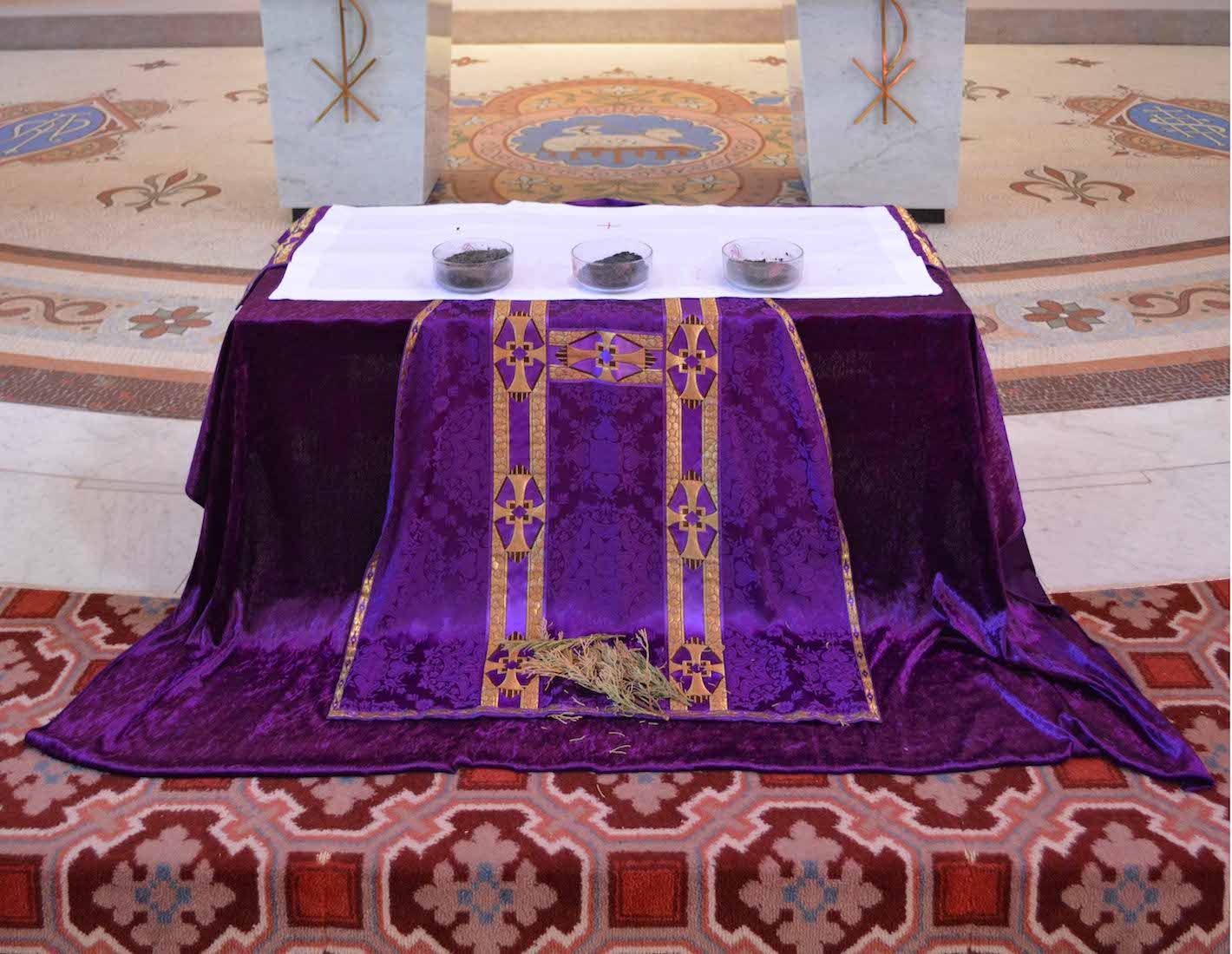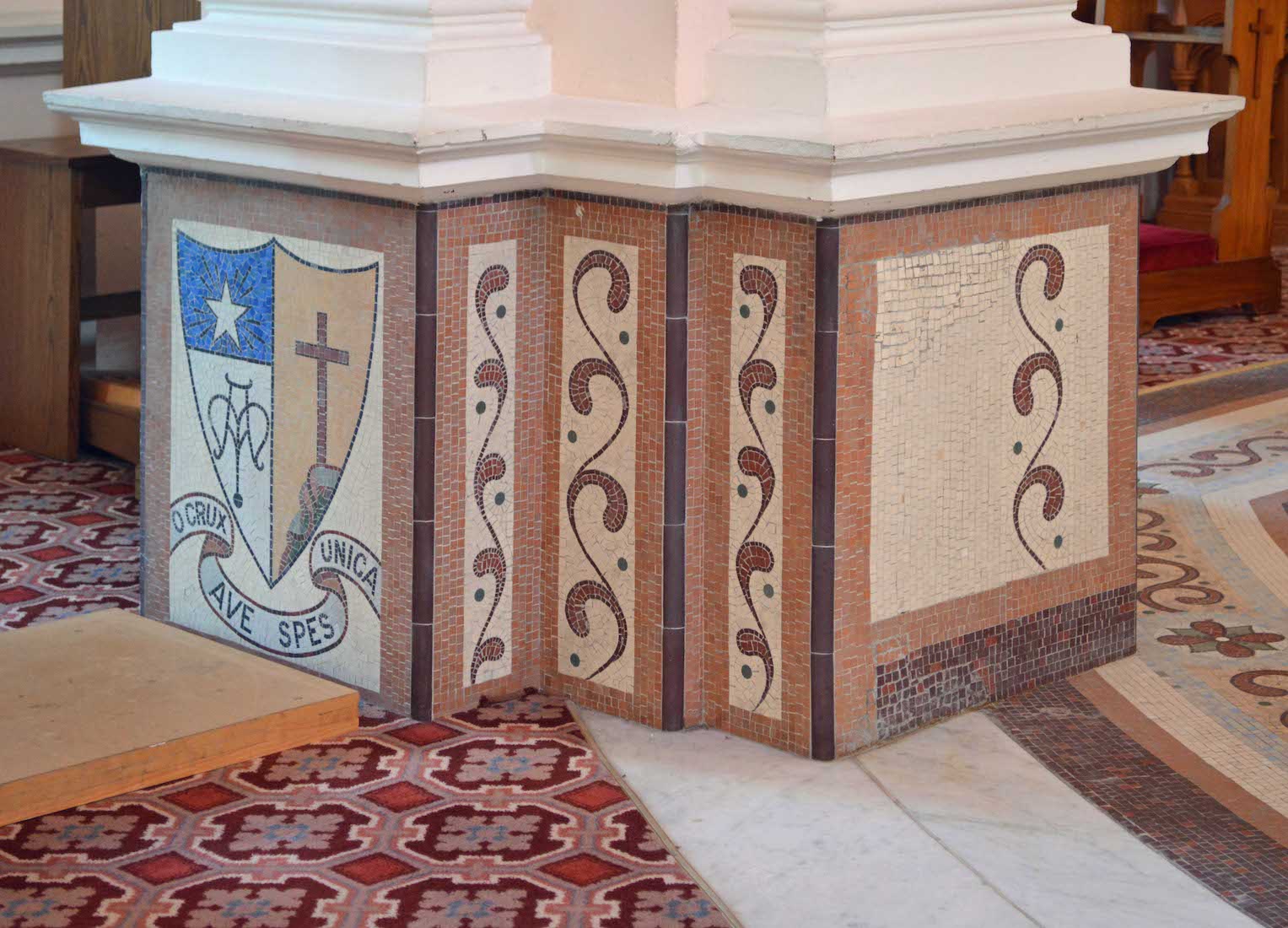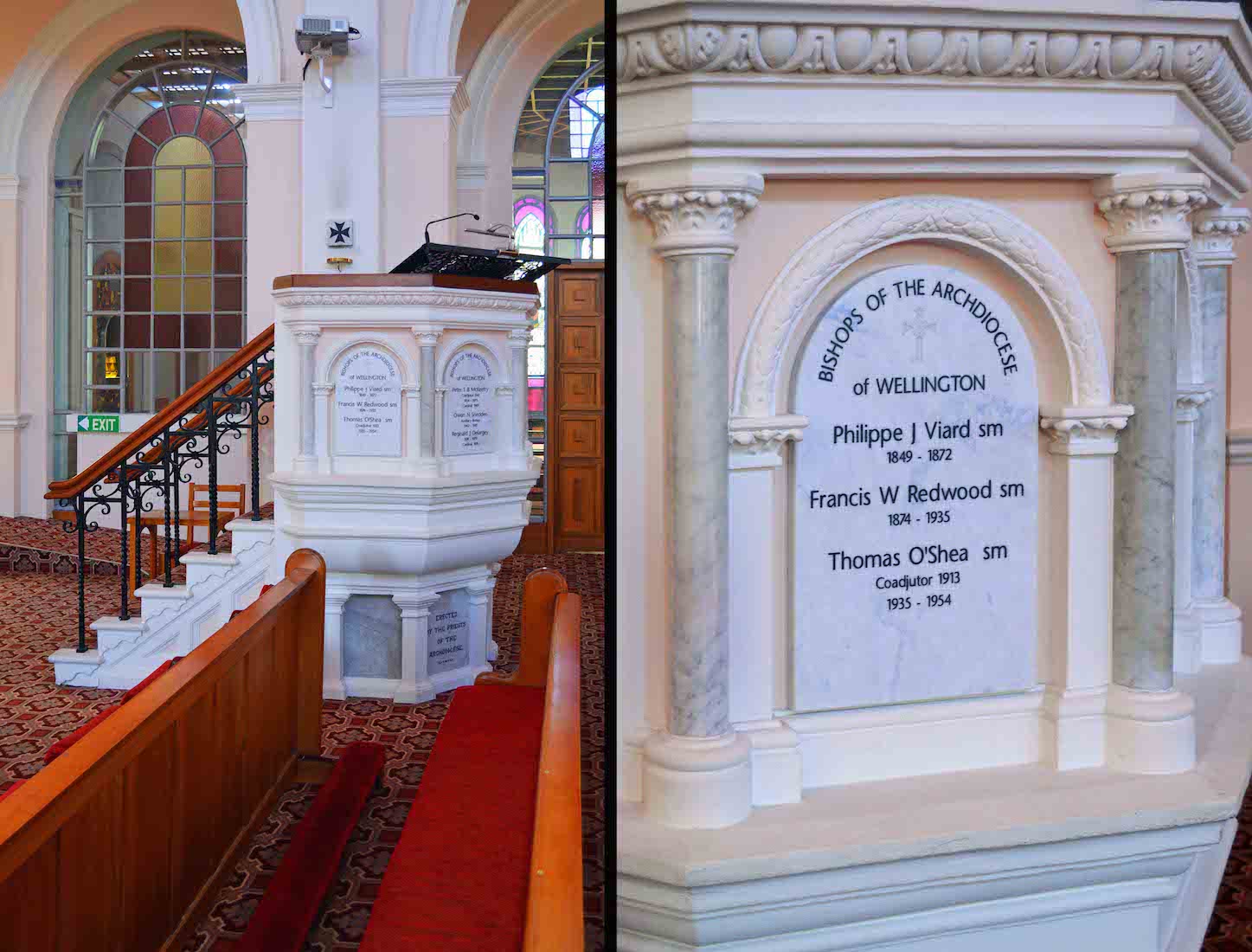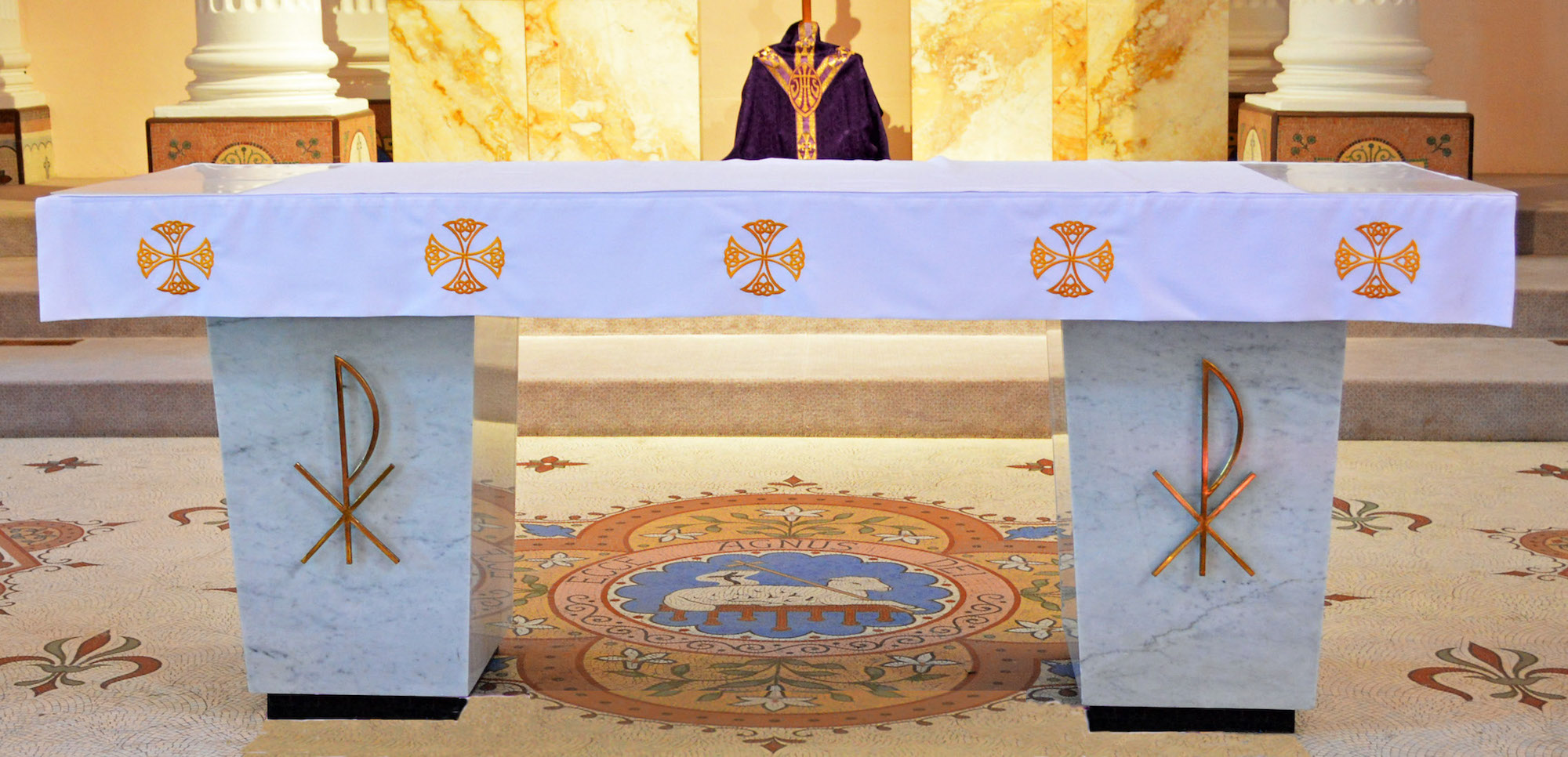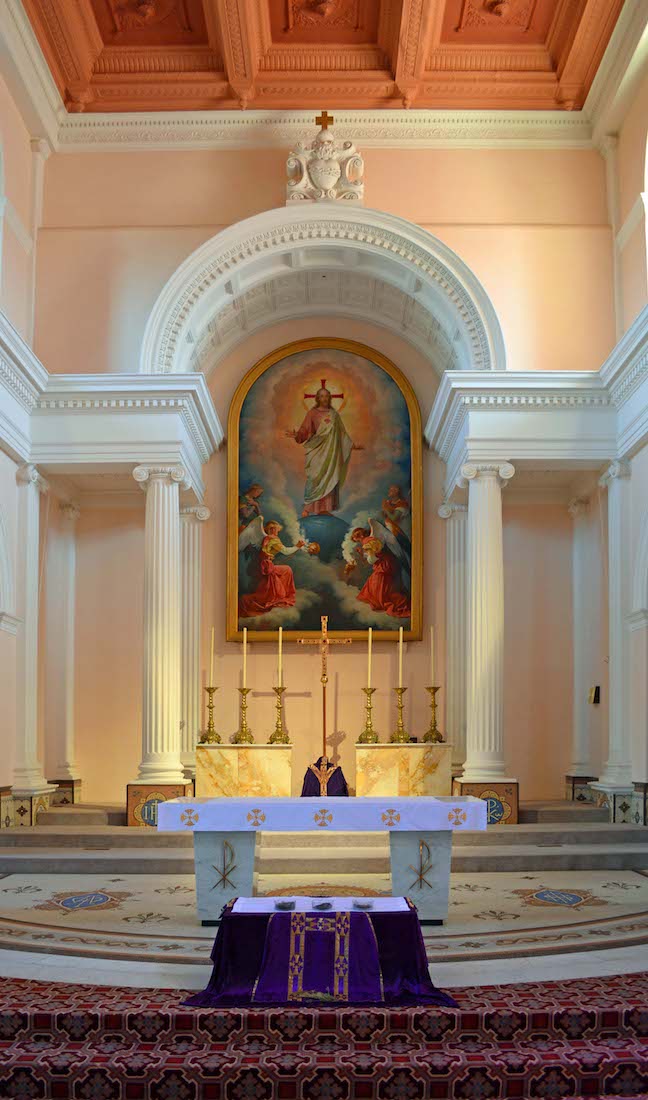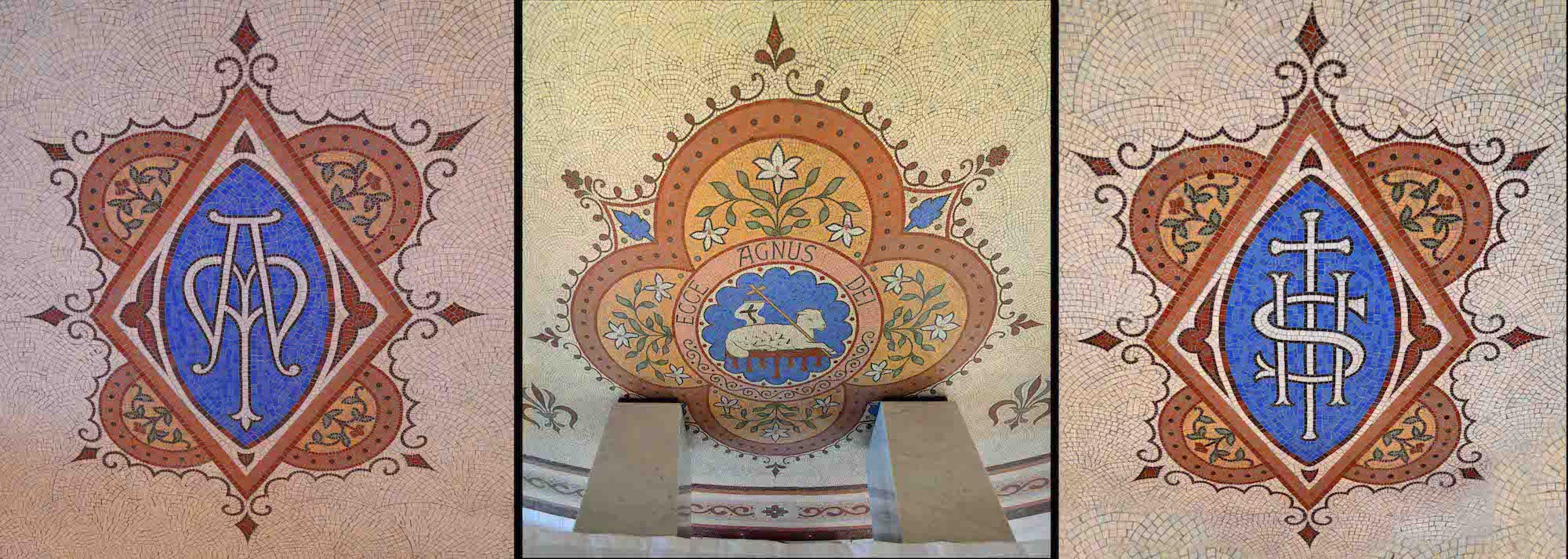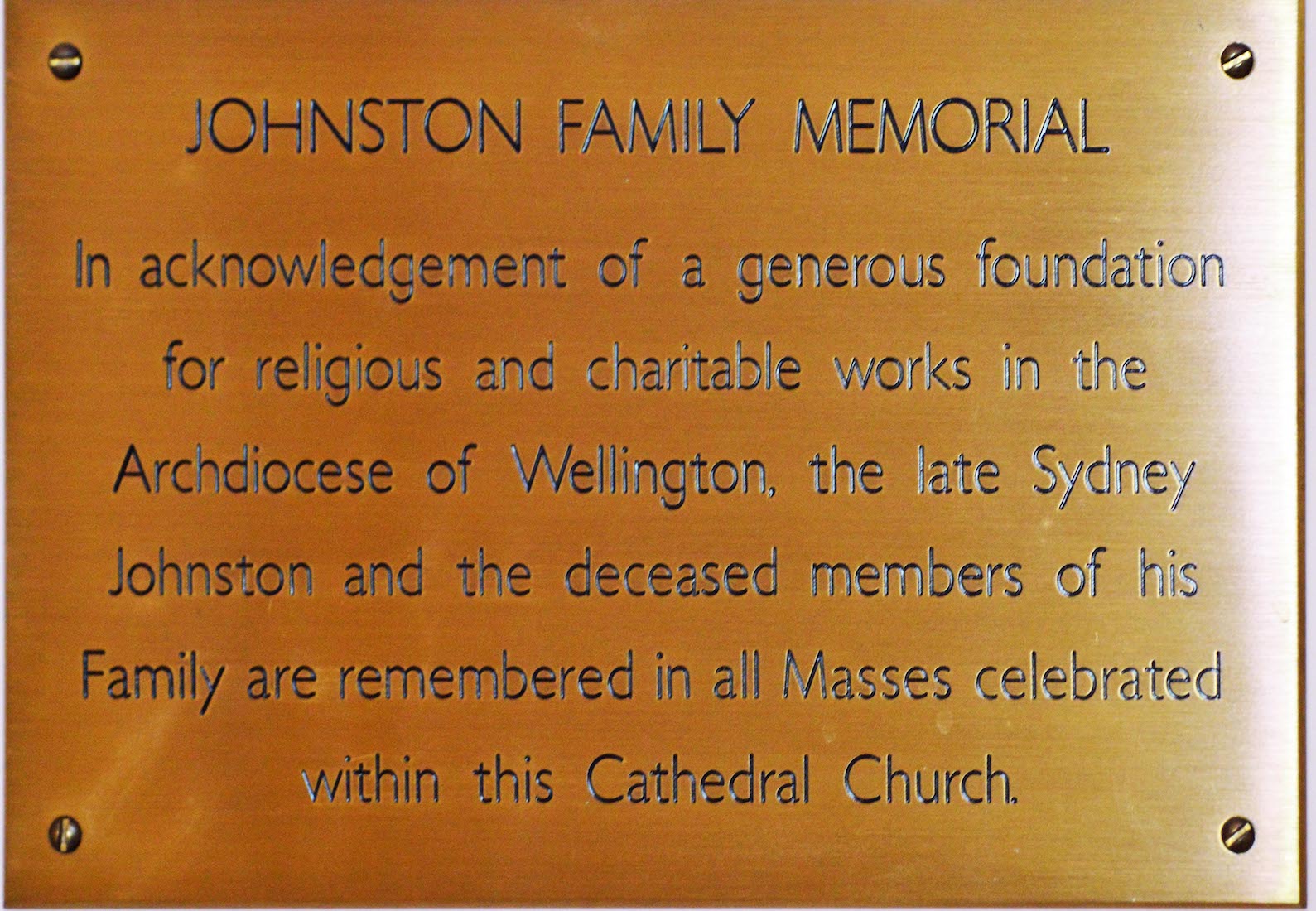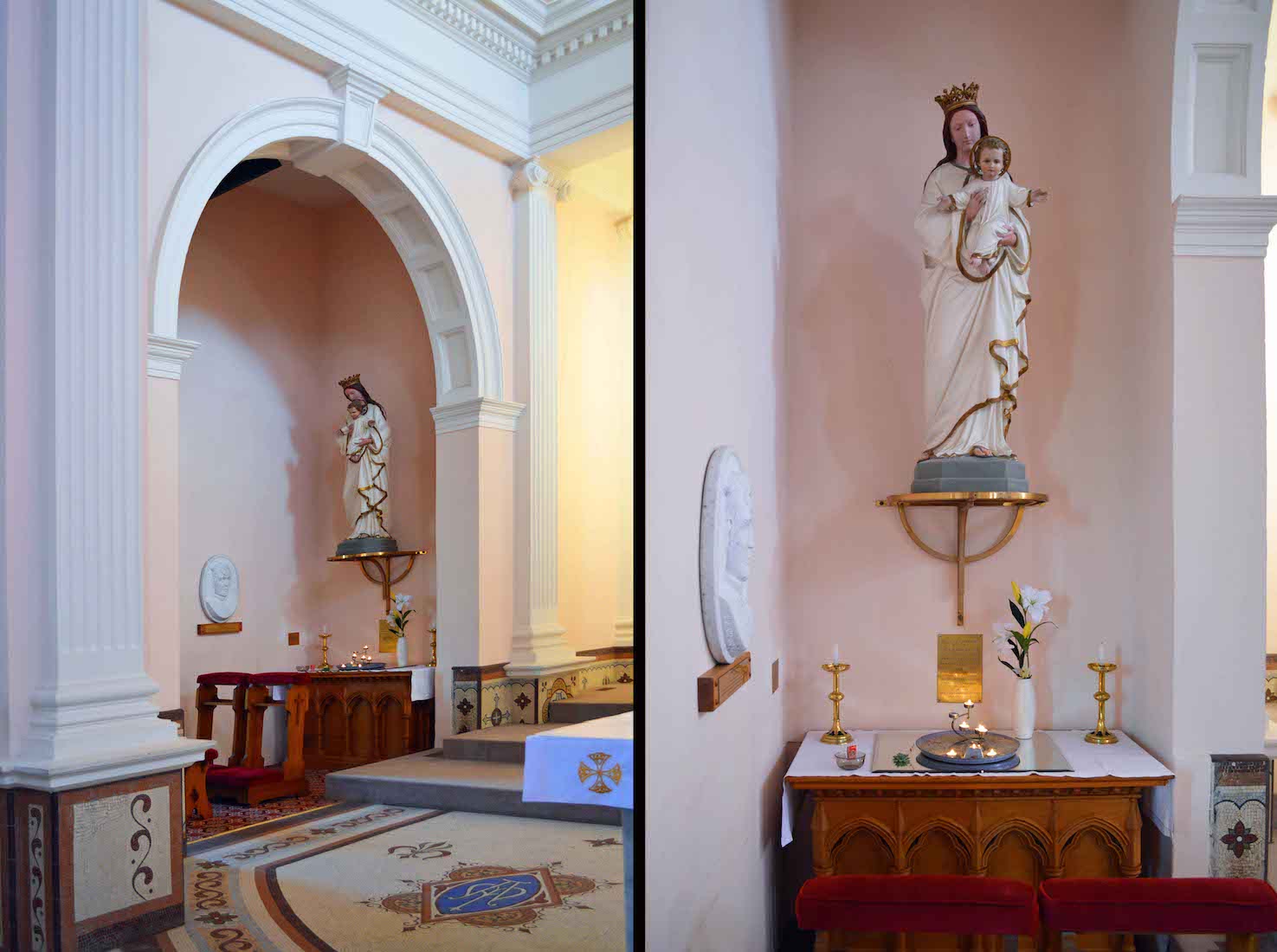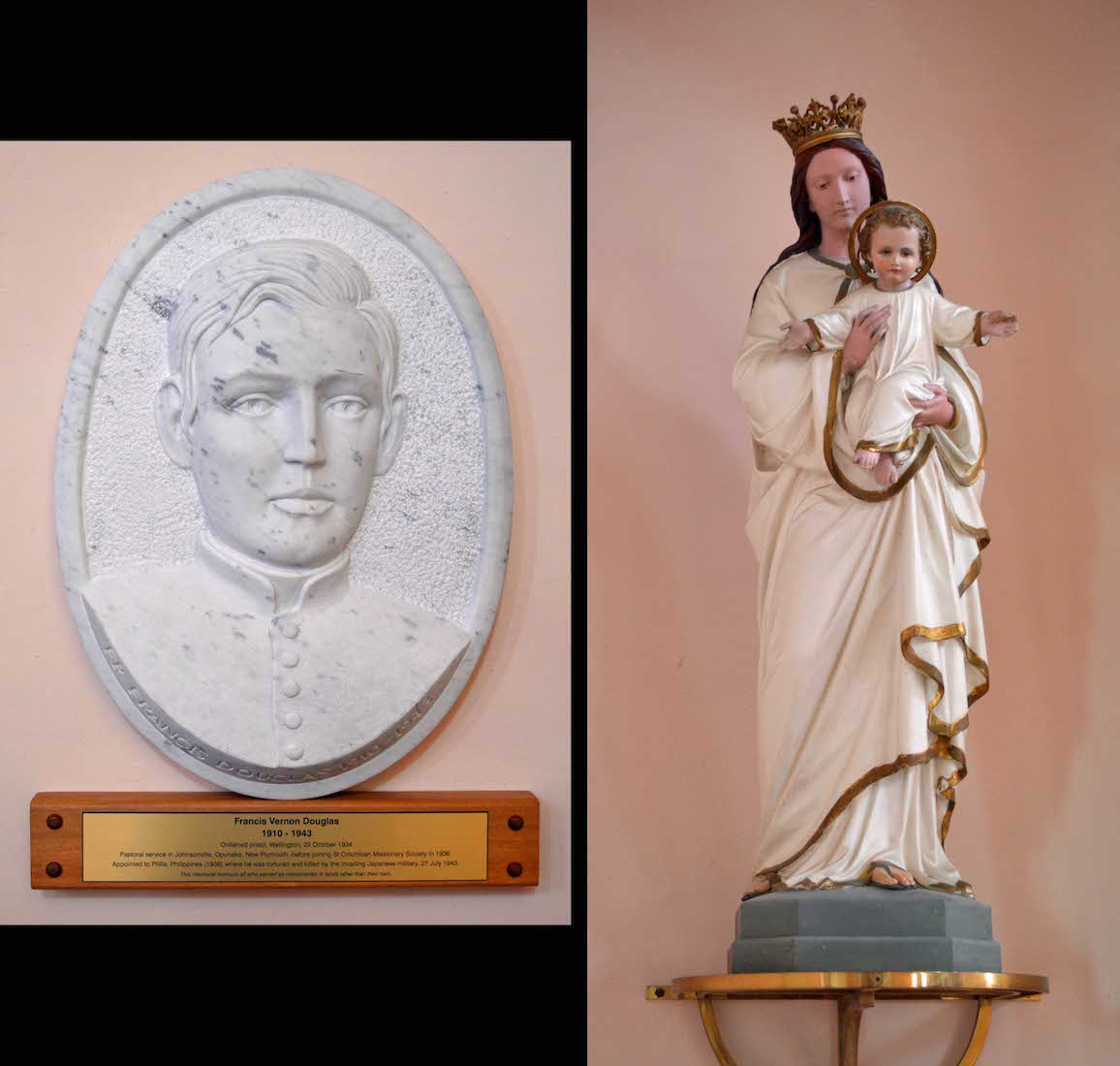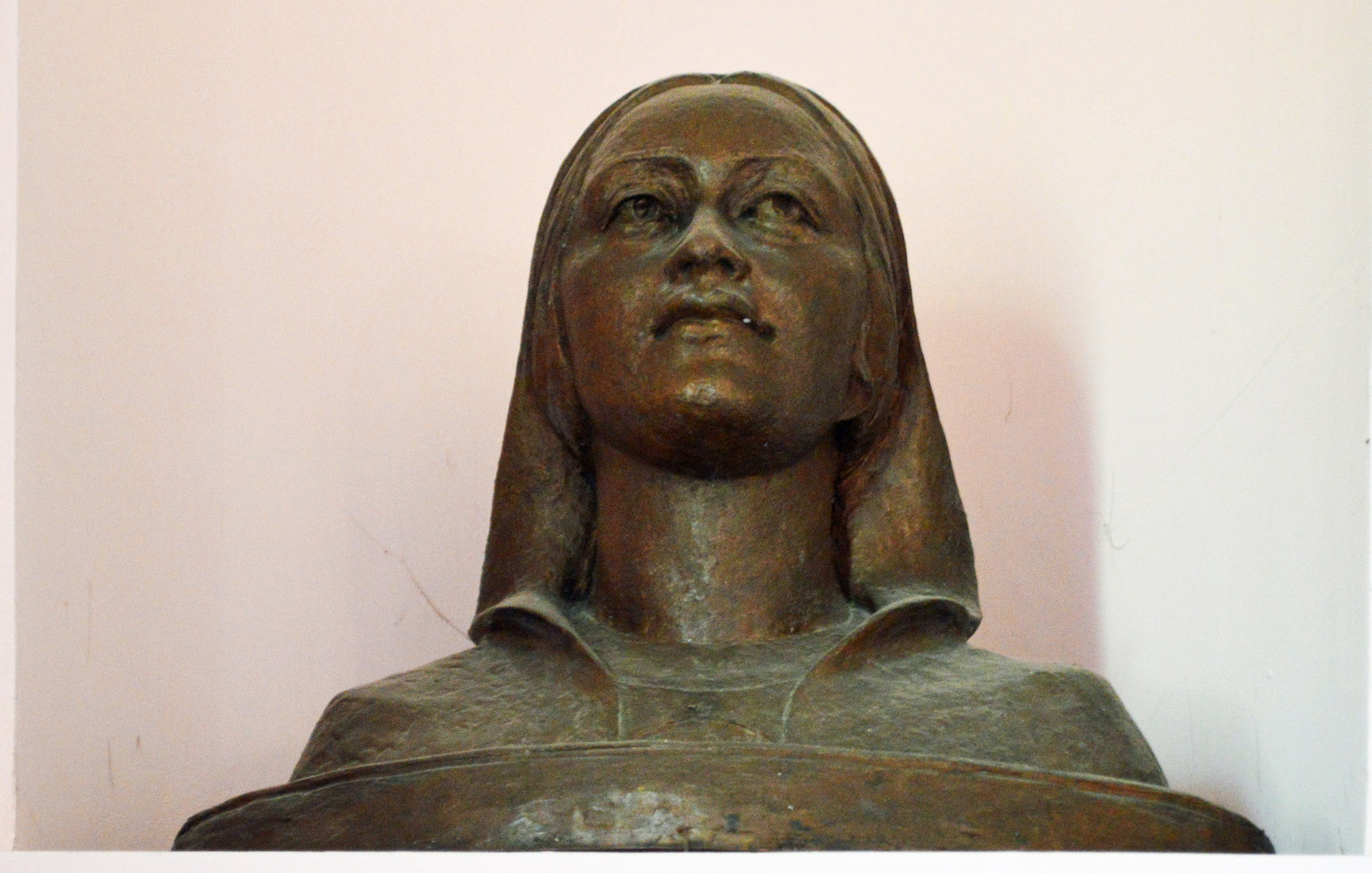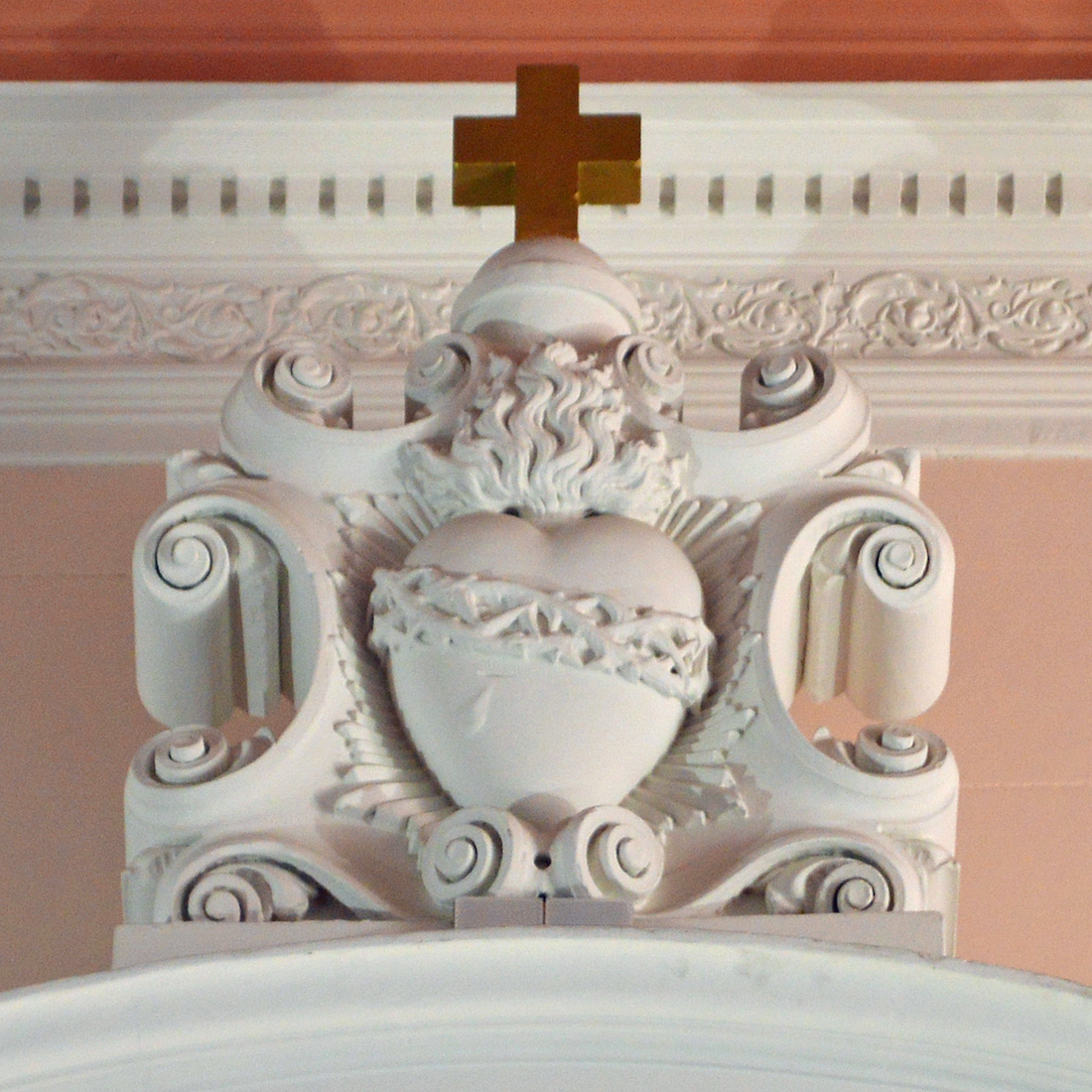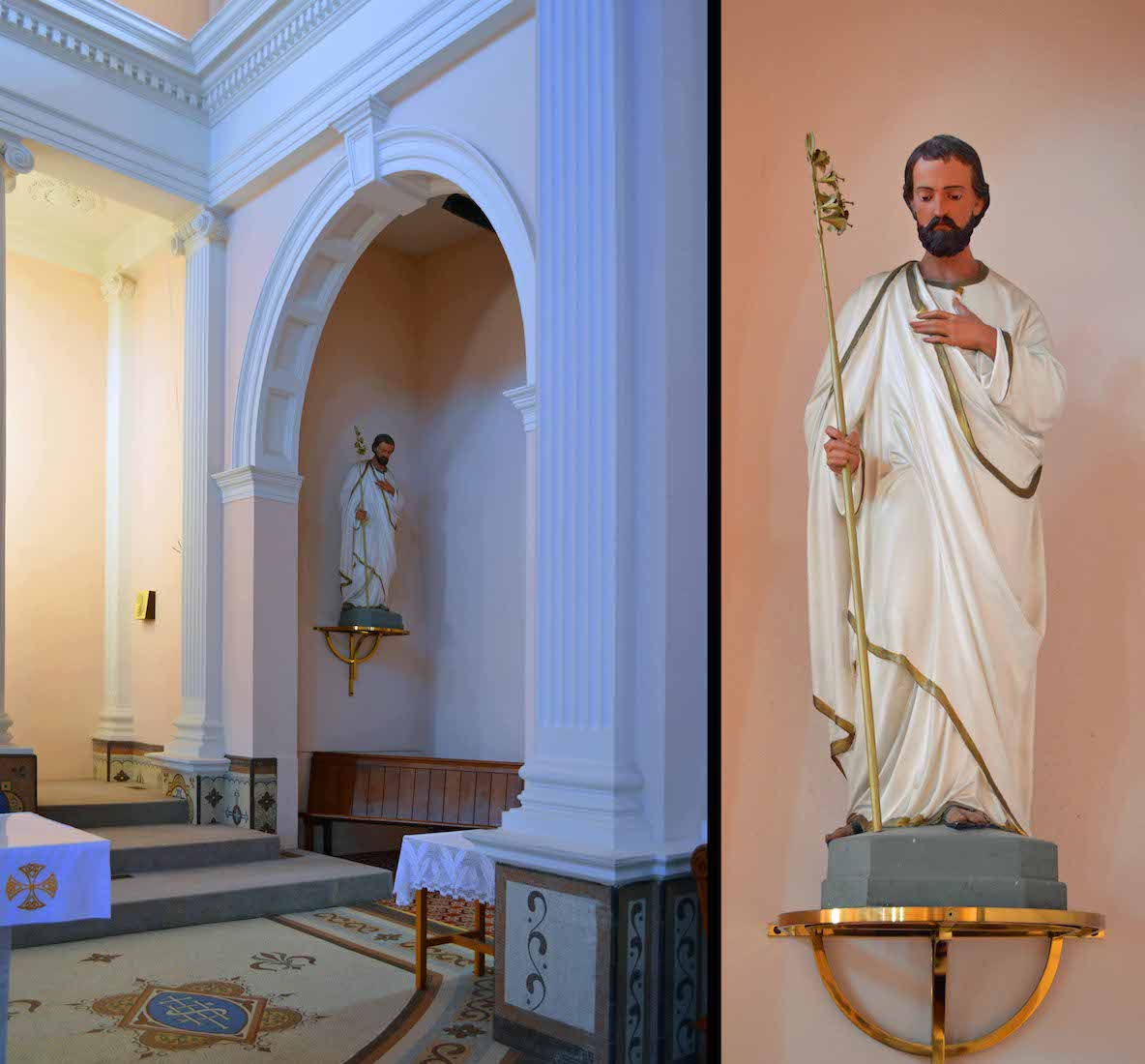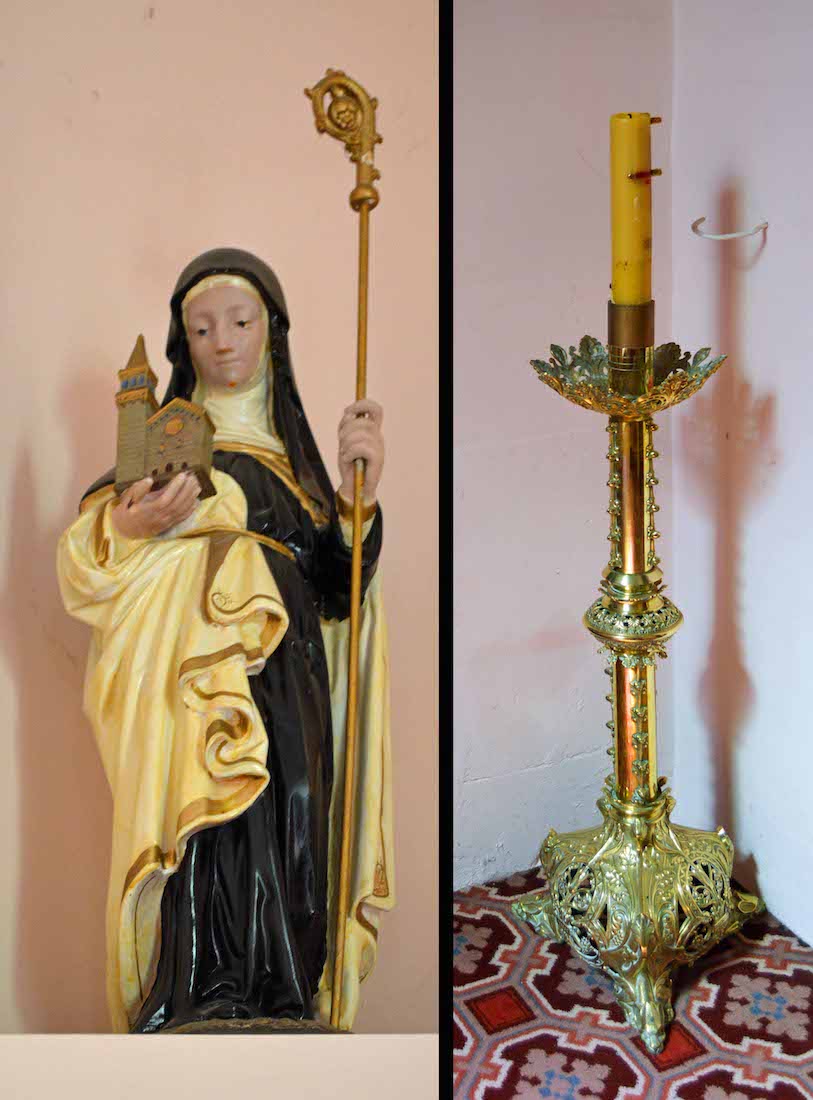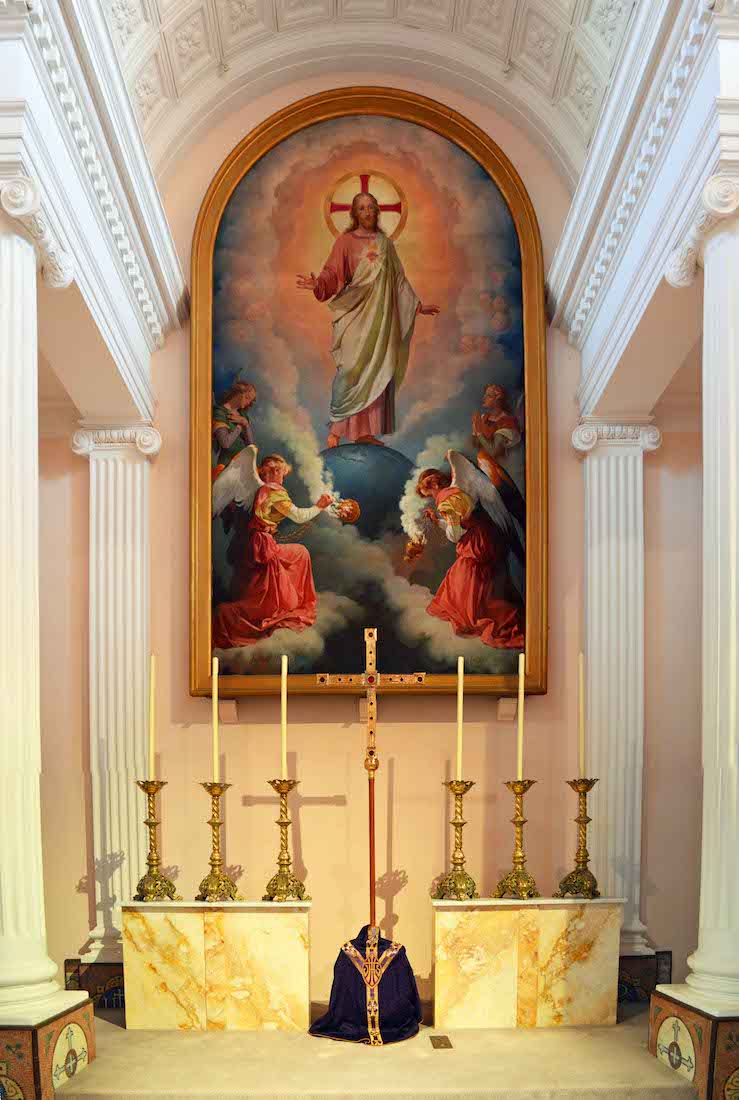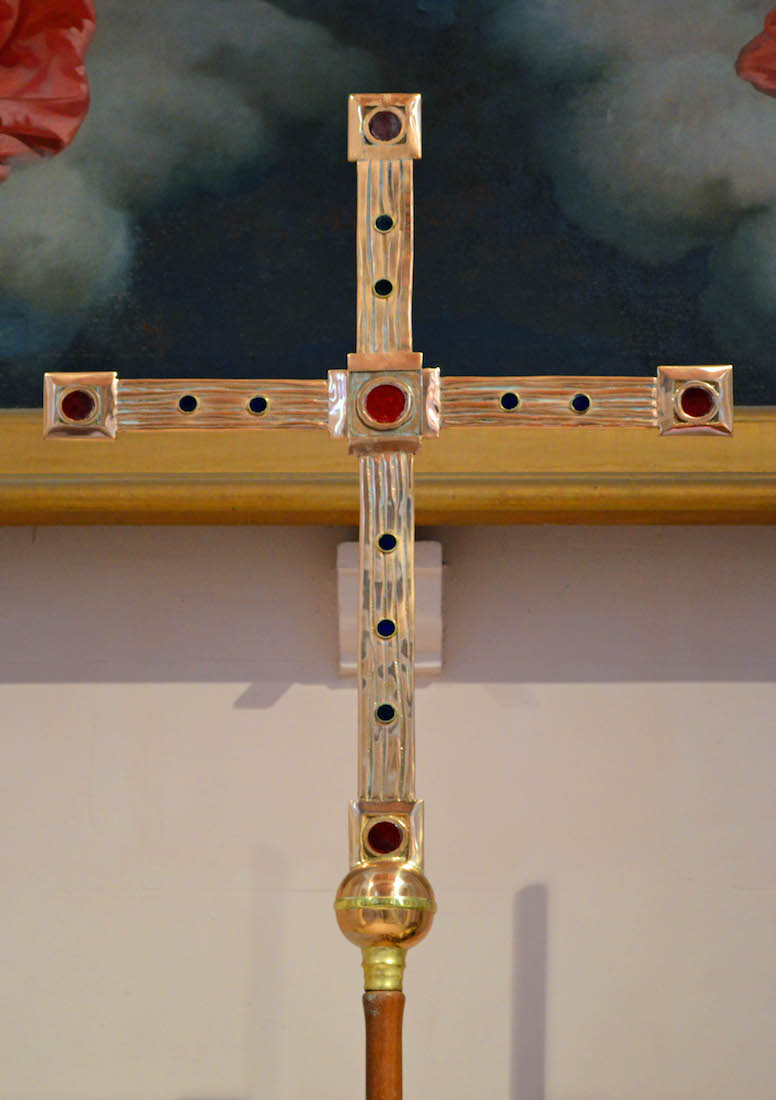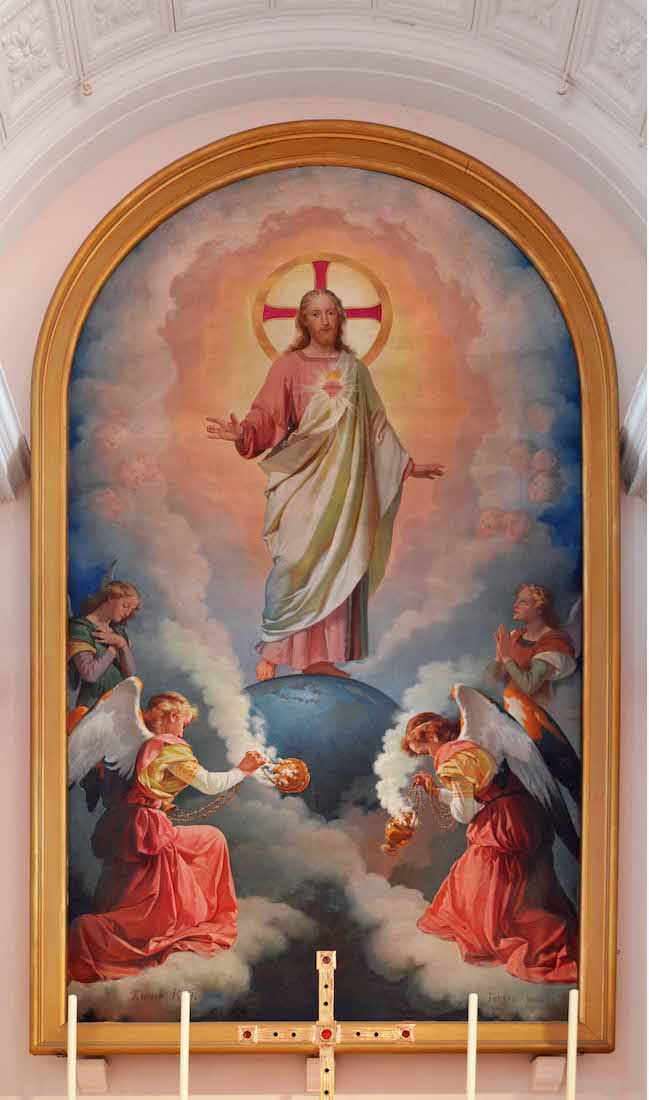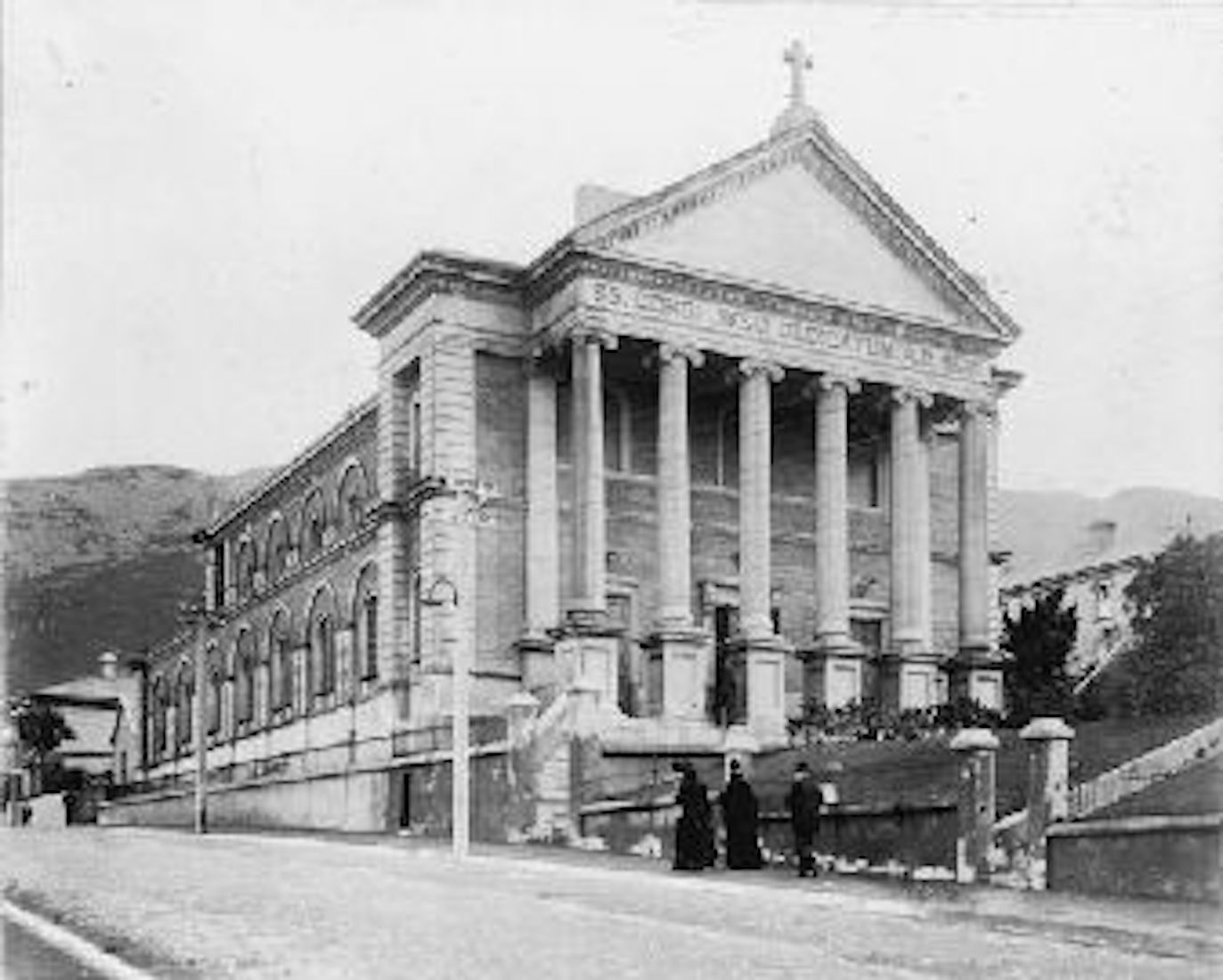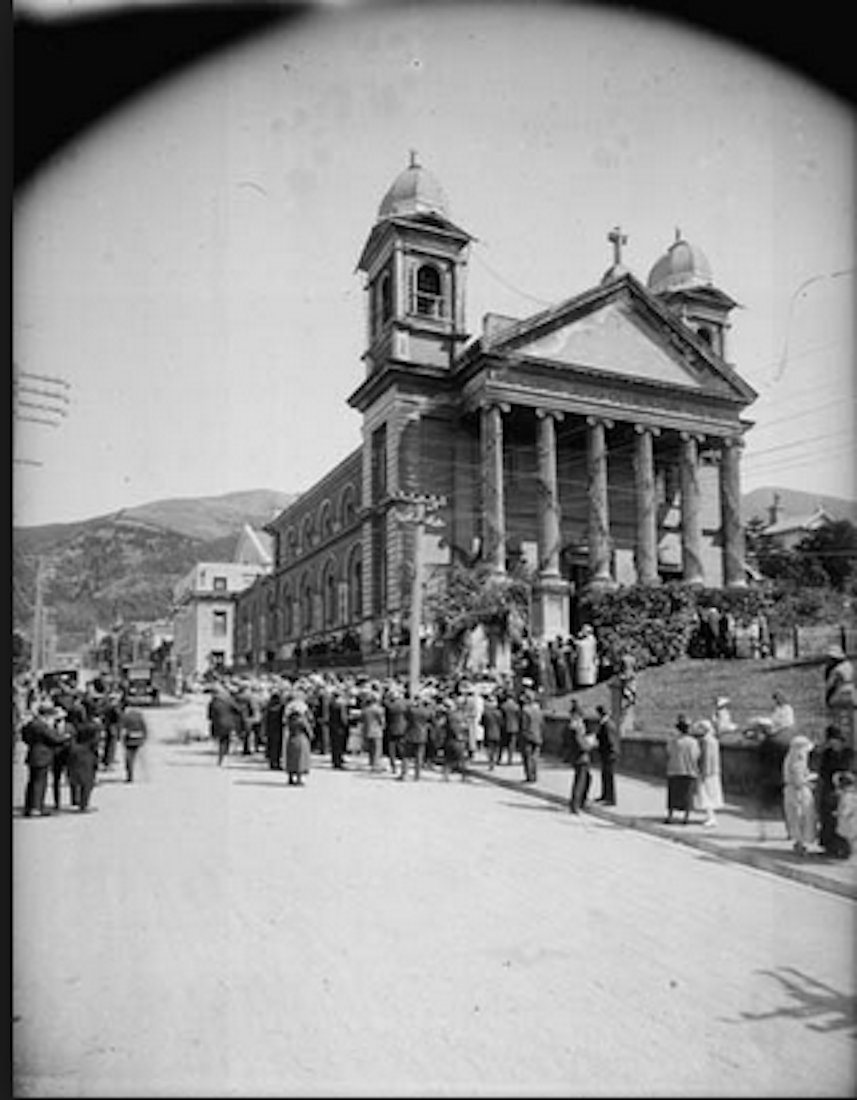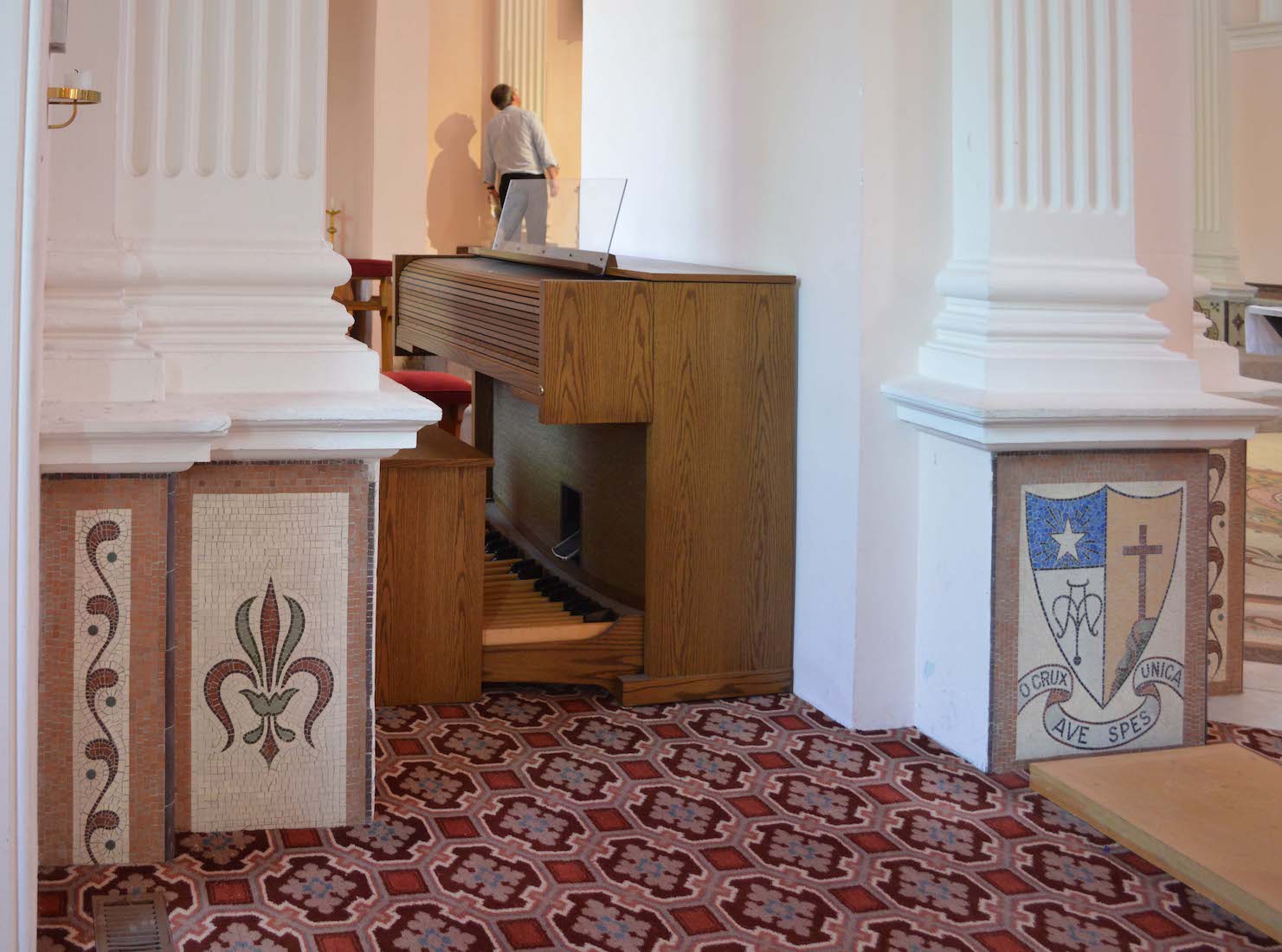
We have already noted the large array of organ pipes in the gallery. The organ console is almost invisible between two supporting columns. I am unsure whether this is the main organ console ... . PLAN
42. MEMORIAL TABLET
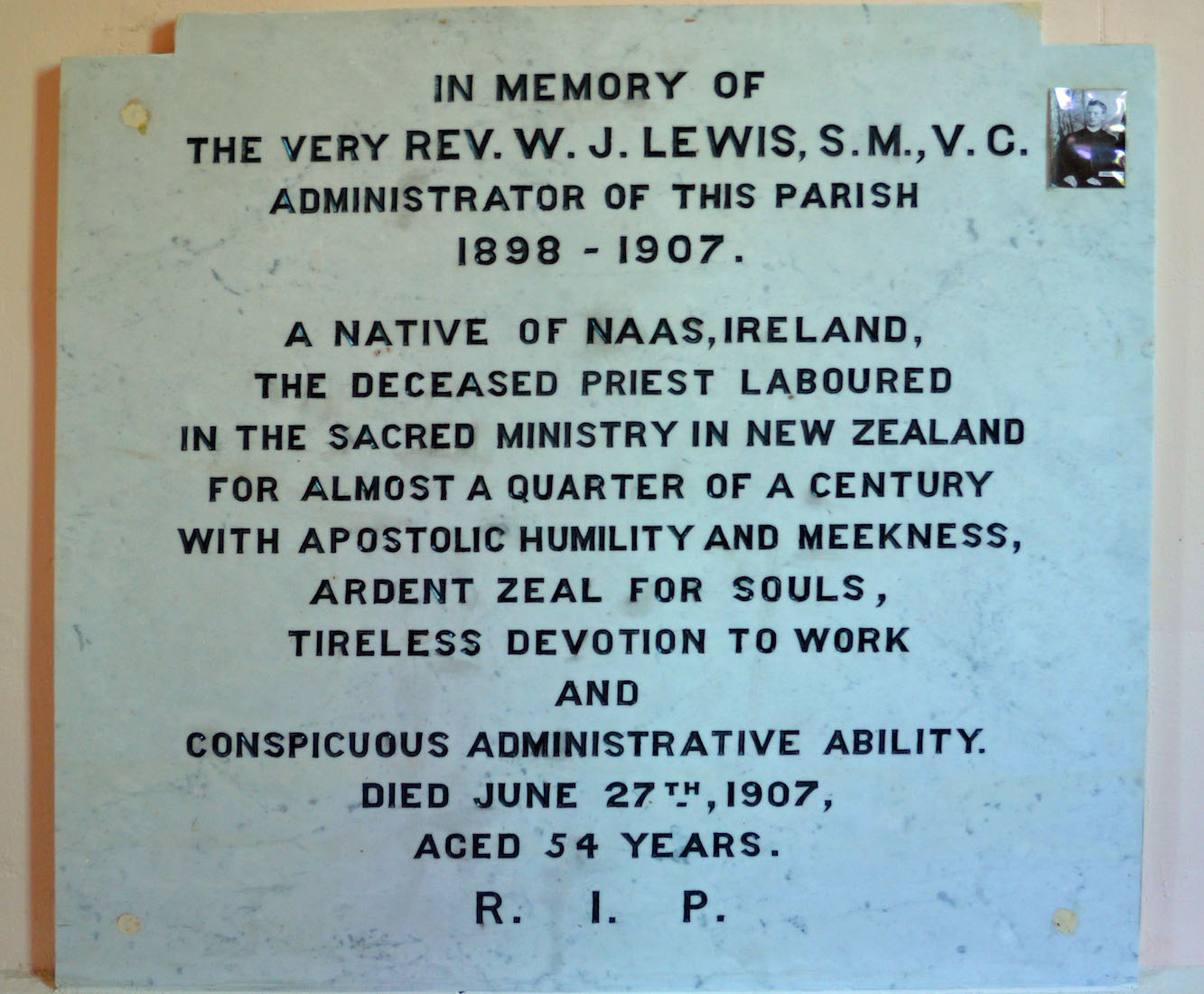
Near the organ console is this tablet in memory of the Very Rev. W. J. Lewis who was administrator of this Parish from 1898 to 1907.
43. ALTAR DISPLAY
In front of the Altar is this little display, presumably for Easter. There is no given explanation, but it seems to pick up the theme of seeds and grain that we noticed in the Hall display.
44. COLUMN DECORATION
The foot of this front supporting column is decorated with the crest of the Diocese. The Latin text ‘O Crux ave spes unica’ translates as ‘Hail to the Cross, our only hope’.
45. PULPIT
The beautiful and ample pulpit is still in use. It was installed in 1908 to commemorate the first parish priest of the new Basilica, Father W J Lewis SM, who died in 1907. He had been parish priest when the Basilica was being built. The pulpit was paid for by his fellow priests and records their sorrow at his demise. The names of all the Bishops and Archbishops in Wellington have recently been inscribed on the panels of the pulpit although the original dedication by the priests to the memory of Father Lewis remains recorded at the base of the structure.
46. ALTAR
The solid marble altar bears the Chi Rho symbol on each supporting column. The Chi Rho is one of the earliest forms of christogram. It is formed by superimposing the first two (capital) letters chi and rho (ΧΡ) of the Greek word ‘ΧΡΙΣΤΟΣ’ = Christ in such a way to produce the monogram.
47. CENTRAL FOCUS
We notice that the floor around the altar is decorated with an intricate mosaic. Behind is a grand arch with an ornamental feature above. Within the arch are six candlesticks, a cross, and a painting of the Risen Christ. However, we will be briefly side-tracked before we arrive here.
48. MOSAIC
The three main components of the mosaic floor are illustrated, although not to scale. The outer designs are ‘AM’ = Ave Maria, and ‘IHS’ = Christ. The central design is the well known ‘Lamb and Banner’ symbol, representing Christ as the Lamb of God. As a visual motif the lamb has been most often represented since the Middle Ages as a standing haloed lamb with a foreleg cocked holding a pennant with a red cross on a white ground, though many other ways of representing it have been used.
49. FAMILY MEMORIAL
Sydney Johnston and his family owned a large homestead called Oruawharo in Takapau. After the death, in 1965, of the last surviving member of the family, the homestead and 62.5 acres of land were gifted to the Roman Catholic Church.
51. MEMORIAL AND MADONNA
The memorial is for ordained priest Francis Vernon Douglas who was a missionary to the Philippines.
52. CHAPEL ALTAR
The small plaque tells us that this wooden altar was originally in Archbishop Redwood‘s Chapel and transferred in the 1980s to St Brigid’s in Wadestown.
53. BRONZE
This bronze sculpture of Mary is in the Lady Chapel. It forms part of the set of bronzes associated with the Stations of the Cross.
54. EMBLEM
At the top of the East arch of the Cathedral, above the Sanctuary, is a large, sculpted, Oamaru stone emblem of the Sacred Heart.
56. ST BRIGID AND CANDLE
Near the sanctuary is a statue of St Brigid, patron of St Brigid's Church, Wadestown, which was closed in 2007. St Brigid (Brigit) was an Irish nun who founded several monasteries. The Paschal candle is a reminder that Christ is the Light of the world.
57. CANDLES, CROSS, PAINTING
We draw near to the conclusion of our tour of Sacred Heart Cathedral. From every point of the Church our eyes are drawn to this central feature.
58. CROSS
The cross is simple, although bejewelled. It is empty, reminding us that Christ was crucified, but is risen.
59. HE IS RISEN!
The sanctuary is dominated by a large painting of the Sacred Heart of Jesus by Enrico Refto. This concludes our visit to Sacred Heart Cathedral. Now just a little history ...
61. SACRED HEART BASILICA, 1910
The new church, called the Basilica of the Sacred Heart, was intended as a substantial building. Its foundation stone was laid in 1899 and the building blessed and opened two years later.
62. BELL TOWERS, 1920
For a period Sacred Heart looked even more Palladian when it had twin bell towers topped with domes. These towers (not designed by Francis Petre) were incorporated in the original design but were removed in 1942, following an earthquake.
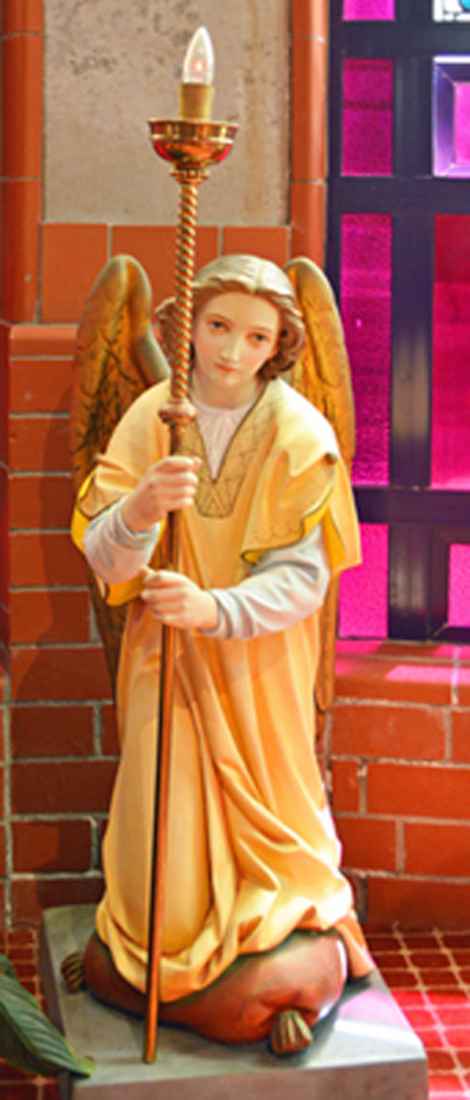
CONCLUSION
I hope you have enjoyed visiting the Sacred Heart Cathedral with me. We especially remember the friendly welcome. Like all cathedrals, it has interesting, unusual, and beautiful surprises.
I am happy to receive constructive comments or corrections concerning this website. The best websites are the ones which have no errors! I am grateful to my wife Margie who came to Wellington with me, and who has proof-read these pages.
Most of the text on this site comes from the website
http://www.wikiwand.com/en/Sacred_Heart_Cathedral,_Wellington
and I am happy to acknowledge this source.
The link for the Cathedral website is:
The photographs which appear on this site can also be found in higher resolution at:
https://www.flickr.com/photos/paulscottinfo/sets/
Paul Scott Site created 10 / 2014; modified 01 / 2016; reformatted 07 / 2020.

